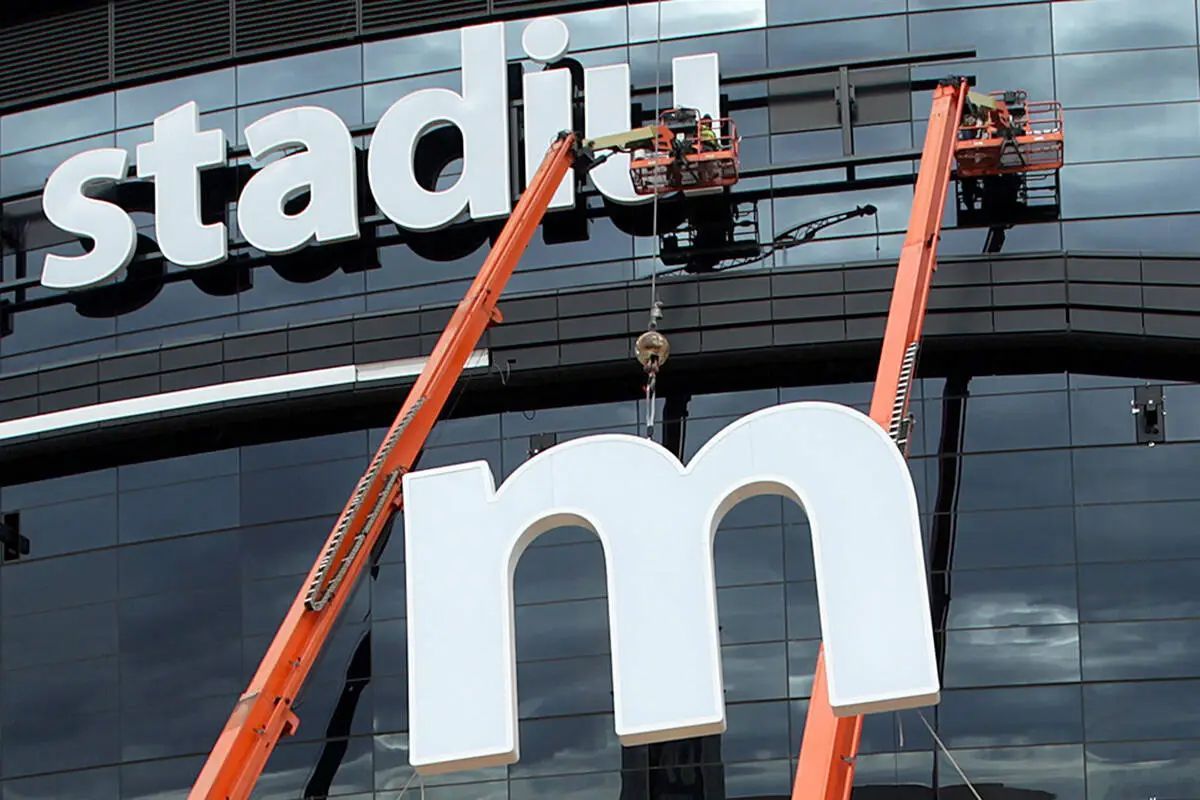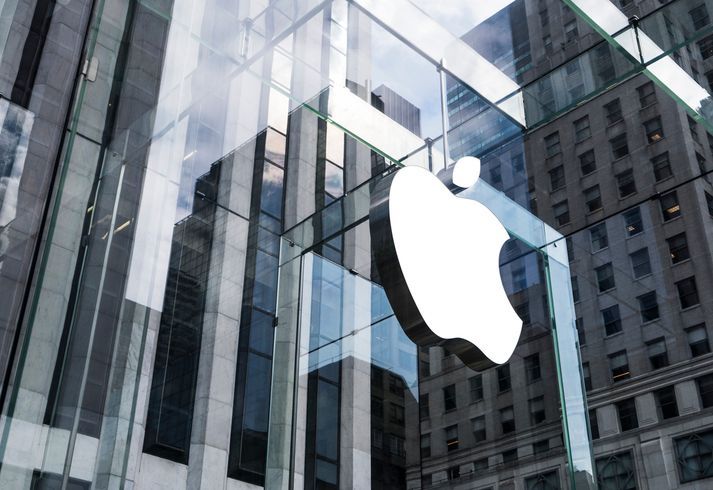HUMANIZE TECH
Give your tech brand a soul.
Welcome to Humanize Tech, the resource hub for technology leaders who grasp the strategic importance of branding.
Any tech brand can perform better if it connects with people on an emotional level. If it communicates meaning, not just features. If it's human. This is the place to find the tools, tips, and resources you need to craft stories that humanize your tech brand. Enjoy.

Jaguar’s recent rebrand has stirred up quite a debate among branding experts, car enthusiasts, and anyone paying attention to the automotive industry. It’s not every day that a legacy brand with nearly a century of heritage makes such a dramatic pivot. And dramatic is the right word for what Jaguar has done: the brand has chosen to shift entirely toward an electric future, leaving behind not only its combustion engines but also its loyal (and dwindling) audience. On the surface, this move is bold, visionary, and forward-looking. But the execution of the rebrand, in my view, misses a critical mark.

In high-tech markets, consumer preferences and market trends evolve rapidly. As a result, companies must remain vigilant about their brand’s relevance and resonance. One way to maintain or enhance brand appeal is through strategic brand modifications. However, the terms "rebrand" and "brand refresh" are often used interchangeably, leading to confusion. Understanding the distinction between these two concepts is crucial for making informed decisions that align with your business goals. What is a Rebrand? A rebrand is a comprehensive transformation of a company's identity. This process involves altering foundational elements such as the company name, logo, visual design, brand messaging, and sometimes even the core values and mission statement. Rebranding is typically undertaken for profound reasons, such as: Market Shifts: When market dynamics change significantly, a rebrand may be necessary to stay competitive. For instance, a company that started in one industry but has pivoted to another may need a rebrand to reflect its new direction. Mergers and Acquisitions: When companies merge or one acquires another, a rebrand can help create a unified identity that represents the new entity. Negative Public Perception: If a brand has suffered from a tarnished reputation, a rebrand can help distance it from past issues and project a fresh image. Global Expansion: Entering new markets with different cultural nuances may require a brand to rebrand to ensure cultural relevance and avoid misunderstandings. Examples of Rebranding One notable example is Google, which rebranded its corporate structure to Alphabet Inc. in 2015. This rebrand was a strategic move to separate its core search engine business from its other ventures and to signal its expansion into various industries, such as biotechnology and autonomous vehicles. Another example is IBM’s transformation from a hardware-centric company to a leader in cloud computing and AI. In the 1990s, IBM shifted its focus from hardware to software and services, rebranding itself as a technology consulting company to better align with market trends and customer needs. What is a Brand Refresh? A brand refresh, on the other hand, is a subtler update to an existing brand. It involves refining and modernizing elements of the brand to keep it current and appealing, without overhauling its core identity. Brand refreshes are undertaken for reasons such as: Staying Current: As design trends evolve, a brand refresh ensures that the company’s visual and messaging elements remain contemporary. Enhanced Relevance: Minor tweaks in brand positioning or messaging can help maintain relevance with the target audience. Expanded Offerings: When a company expands its product or service lines, a refresh can help incorporate these new elements into the existing brand framework. Examples of Brand Refreshes Microsoft’s refresh of its Windows logo in 2012 is a prime example. The update modernized the logo’s design, transitioning from the colorful, wavy flag to a more minimalist and flat design, aligning with the then-new Metro design language introduced with Windows 8. Another example is Intel’s brand refresh in 2020. While retaining its iconic blue color, Intel introduced a new logo and visual identity to reflect its evolution and innovations in areas like AI, 5G, and edge computing, ensuring the brand remained relevant in the rapidly changing tech landscape. Key Differences Between a Rebrand and a Brand Refresh Understanding the distinction between a rebrand and a brand refresh involves recognizing the scope, purpose, and impact of each process. Scope Rebrand: A rebrand is comprehensive, encompassing all aspects of the brand, from visual identity to core messaging and sometimes even the company’s name. It’s a top-to-bottom overhaul aimed at repositioning the company entirely. Brand Refresh: A brand refresh is more focused and limited in scope. It typically involves updating specific elements like the logo, color palette, typography, or tagline, while keeping the overall brand essence intact. Purpose Rebrand: The purpose of a rebrand is to signify a fundamental shift in the company’s direction, market positioning, or identity. It’s often a response to significant internal or external changes. Brand Refresh: The purpose of a brand refresh is to keep the brand vibrant and relevant. It’s about making necessary adjustments to stay in tune with evolving trends and consumer preferences. Impact Rebrand: The impact of a rebrand is profound, affecting all stakeholders, from employees to customers and investors. It requires extensive communication and often involves re-educating the market about the new brand identity. Brand Refresh: The impact of a brand refresh is more subtle but still significant. It helps reinforce the brand’s relevance and appeal without causing confusion among existing customers. When to Choose a Rebrand vs. a Brand Refresh Deciding between a rebrand and a brand refresh depends on the specific circumstances and objectives of your business. Choose a Rebrand If: Your brand no longer reflects your company’s values, vision, or market position. You’re undergoing significant changes such as mergers, acquisitions, or entering new markets. You need to distance your brand from negative perceptions or past controversies. Choose a Brand Refresh If: Your brand needs a visual or messaging update to stay current and appealing. You’re expanding your product or service offerings and need to reflect these changes. You want to enhance your brand’s relevance without overhauling its core identity. Both rebranding and brand refreshes are powerful tools for maintaining and enhancing your brand’s appeal. While a rebrand involves a complete transformation to signal significant changes, a brand refresh focuses on modernizing and fine-tuning the existing brand. By understanding the differences and carefully considering your business objectives, you can choose the right approach to ensure your brand remains strong, relevant, and resonant.

In B2B technology arenas like SaaS, IT services, and IT infrastructure, standing out in a crowded marketplace is both a challenge and a necessity. Brand directors and CMOs are tasked with the critical role of ensuring their company's unique value proposition is clear, compelling, and consistent. Yet, even the most seasoned professionals can sometimes miss the signs that their brand positioning is off-kilter. Here are five key indicators that your B2B tech brand may have a positioning problem. 1. Your Go-To Slide Deck is 40+ Slides One of the clearest signs of a positioning problem is an overstuffed slide deck. If your standard presentation to prospects or stakeholders is more than 40 slides, it’s a red flag. An overly lengthy deck often means you’re trying to compensate for a lack of clarity and focus. Instead of delivering a succinct and compelling narrative, you’re bombarding your audience with information in the hope that something will stick. A well-positioned brand can convey its core message and value proposition in just a few slides. It should be easy to communicate what your company does, how it’s different, and why it matters. If you find yourself needing slide after slide to explain your business, it’s time to revisit and refine your positioning. 2. You Sound Like All Your Competitors In the B2B tech space, differentiation is key. If your messaging sounds eerily similar to that of your competitors, your brand is likely suffering from a positioning problem. When your value proposition, key messages, and even your taglines echo the industry norm, it becomes challenging for prospects to see why they should choose you over another provider. Conduct a competitive analysis to see how your messaging stacks up against others in your industry. If you find that your language, tone, and claims blend in with the crowd, it’s a clear indication that your positioning needs a refresh. Aim to highlight your unique strengths and the distinct benefits you offer to stand out in a sea of sameness. 3. Even Your Employees Can't Describe What You Do or Why It’s Important Your employees are your brand ambassadors, and if they struggle to articulate what your company does and why it matters, you have a positioning problem. When employees can’t easily describe your company’s mission, products, and unique value, it points to a lack of internal alignment and clarity. Hold internal workshops or training sessions to ensure that everyone in your organization understands and can communicate your brand’s positioning. A strong, clear, and well-communicated positioning strategy not only helps in external marketing efforts but also boosts internal morale and alignment. 4. Your Sales Cycle is Incredibly Long While B2B tech sales cycles are inherently longer due to the complexity of products and decision-making processes, an excessively long sales cycle can indicate a positioning issue. If prospects are taking too long to move through the sales funnel, it may be because they don’t fully understand the value you provide or how you differ from competitors. Clear and compelling positioning helps prospects quickly grasp your value proposition — even before they engage with Sales — leading to faster decision-making. Review your sales and marketing materials to ensure they are succinct, compelling, and aligned with your brand’s unique strengths. Simplifying and clarifying your message can help reduce the length of your sales cycle. 5. Your Market Share is Stagnant or Declining If your market share has plateaued or is declining, despite consistent marketing and sales efforts, it’s a strong indicator that your brand positioning may be off. Stagnant or declining market share suggests that your target audience isn’t resonating with your current positioning, or worse, they’re being swayed by competitors with clearer, more compelling messages. Conduct market research to gather insights on how your brand is perceived versus your competitors. Use this data to refine your positioning strategy, ensuring it aligns with market needs and differentiates you from the competition. A well-positioned brand should be able to capture and grow market share by clearly communicating its unique value proposition. Outside Perspective is a Game Changer Identifying and addressing a positioning problem is crucial for the success of your B2B tech brand. Gaining the outside perspective of a brand agency can help identify opportunities internal stakeholders may be too close to see. Speak! has helped a long list of tech leaders discover their brand essence and carve out a compelling position. Let our leadership team provide an initial analysis of your positioning and visual identity strategy . Tell us a little bit about your brand and we'll weigh via a video recording with our assessment and provide some actionable tips and priorities.

From FinTech and MarTech to EdTech and InsurTech, the B2B SaaS (Software as a Service), is flooded with vendors seeking to stand apart. A well-crafted brand strategy had never been more crucial. Strong positioning and messaging, combined with a unique visual identity, not only differentiates a company from its competitors but also builds trust, credibility, and emotional connections with its target audience. Here, we delve into the best practices for B2B SaaS companies to build and maintain a compelling brand. 1. Understand Your Target Audience The foundation of any successful brand strategy is a deep understanding of the target audience. B2B SaaS companies must identify the real humans who are making the decisions and segment their audience based on industry, company size, pain points, and buying behavior. This segmentation allows for more personalized and relevant messaging. Example: HubSpot , a leading marketing, sales, and customer service SaaS platform, has a diverse audience ranging from small businesses to large enterprises. HubSpot tailors its messaging to address the specific needs of each segment, providing targeted solutions and resources. 2. Craft a Clear and Compelling Value Proposition A value proposition succinctly communicates the unique benefits and value that your SaaS product offers. It should address the pain points of your target audience and highlight what sets your product apart from competitors. Example: Slack’s value proposition is "Slack is where work happens." This simple yet powerful statement encapsulates Slack’s core benefit of streamlining team communication and collaboration, making it indispensable for modern workplaces. 3. Develop a Consistent Brand Identity Consistency is key in branding. Your brand identity should be cohesive across all touchpoints, including your website, social media, email marketing, and customer support. This includes visual elements (logo, color scheme, typography) and messaging (tone, voice, key messages). Example: Salesforce , a pioneer in the SaaS industry, maintains a consistent brand identity with its distinctive cloud logo, blue color palette, and approachable, friendly tone of voice. This consistency helps reinforce brand recognition and trust. 4. Humanize Your Brand In the B2B space, it’s easy to focus solely on the technical aspects of your product. However, humanizing your brand can create stronger emotional connections with your audience. Showcase the people behind your company, share customer success stories, and engage in authentic conversations. Example: LogRhythm , known for its cybersecurity platform, underwent a rebrand with the guidance of Speak!. The resulting brand story and visual identity amplifies the confidence the heroes working behind the scenes gain from working with a trusted platform. Focusing on the human impact of the solution created an authentic connection with stressed cyber teams on the front line. 5. Leverage Content Marketing Content marketing is a powerful tool for establishing thought leadership and building trust in the B2B SaaS space. Create valuable, educational content that addresses the challenges and needs of your target audience. This can include blog posts, whitepapers, case studies, webinars, and more. Example: Moz , an SEO software company, has built a strong brand through its extensive content marketing efforts. Their blog, “Moz Blog,” is a go-to resource for SEO professionals, offering insights, tips, and industry updates that demonstrate Moz’s expertise and thought leadership. 6. Utilize Social Proof Social proof, such as testimonials, case studies, and user reviews, can significantly enhance your brand’s credibility. Potential customers are more likely to trust the experiences of their peers than marketing messages from the company itself. Example: Zendesk , a customer service software provider, prominently features customer stories and testimonials on its website. These real-world examples of how companies have benefited from Zendesk’s solutions help build trust and encourage new prospects to take action. 7. Invest in a Memorable Logo and Visual Identity Your logo and visual identity are the face of your brand. They should be memorable, distinctive, and reflective of your company’s values and personality. A well-designed logo can leave a lasting impression and enhance brand recall. Example: Intercom , a customer messaging platform, has a simple yet memorable logo featuring a smiley face. This logo, combined with a clean and modern visual identity, effectively conveys Intercom’s friendly and approachable brand personality. 8. Focus on Customer Experience Exceptional customer experience is a cornerstone of a strong brand. Ensure that every interaction with your customers, from onboarding to support, reflects your brand values and commitment to their success. Happy customers are more likely to become brand advocates. Example: Zoom , the video conferencing software, places a strong emphasis on customer experience. Their user-friendly interface, reliable performance, and responsive customer support have contributed to their reputation as a trusted and beloved brand. 9. Engage on Social Media Social media is not just for B2C companies. B2B SaaS companies can use social media platforms to engage with their audience, share valuable content, and showcase their brand personality. It’s also an excellent channel for customer support and feedback. Example: Adobe Creative Cloud actively engages with its audience on social media platforms like Twitter, LinkedIn, and Instagram. They share tutorials, customer stories, and industry insights, reinforcing their brand as a leader in creative software solutions. 10. Monitor and Adapt Your Brand Strategy Branding is not a one-time effort; it requires continuous monitoring and adaptation. Keep an eye on industry trends, customer feedback, and competitor activities. Be willing to evolve your brand strategy to stay relevant and meet the changing needs of your audience. Example: Atlassian , known for its collaboration and project management software, regularly updates its brand strategy to reflect the evolving needs of its customers. Their recent rebranding efforts included a refreshed visual identity and refined messaging to better align with their mission and values. Bonus Tip: Outside Perspective is Beneficial Following these best practices and learning from successful examples, can help your B2B SaaS companies create a compelling brand that resonates with your target audience. However, tapping the expertise of a specialist brand agency that knows how to ask the right questions and pull the right threads can accelerate your success. Take two minutes to answer a few questions and get a head start on your brand initiative. Speak! will perform an initial brand diagnostic and provide a video synopsis of recommended priorities, opportunities, and candid feedback.






